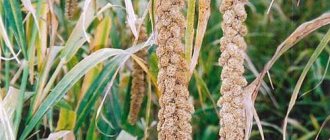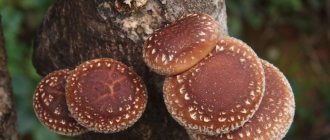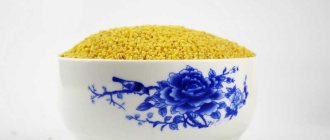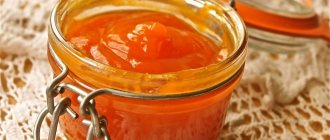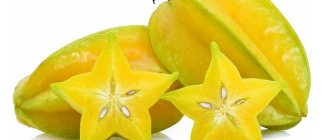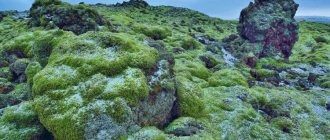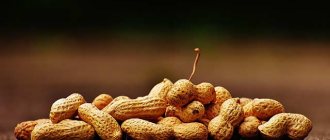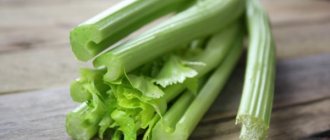Description of angelica honey
Angelica honey has high nutritional value and biological activity. The following substances were found in its composition:
- sugars - glucose, fructose, maltose, a small percentage of sucrose;
- organic acids;
- microelements – potassium, magnesium, iodine, sodium, phosphorus, iron, nickel, chromium, fluorine;
- vitamins H, E, K, B2, B6, PP;
- essential amino acids;
- biogenic stimulants.
Attention!
In terms of the percentage of mineral salts necessary for a healthy human life, angelica honey ranks first among beekeeping products. We recommend reading: Honey: beneficial and medicinal properties, contraindications
What does angelica honey look like?
Angelica honey has a thick, viscous consistency. It flows from the spoon in a continuous stream. Transparent, homogeneous. If fresh honey quickly thickens and becomes sugary, this means, at a minimum, a mixture of angelica pollen with other honey plants that are less beneficial to the body. The color is pleasant, reddish-brown, amber, slightly lighter or darker. Sometimes there is a greenish sheen - this depends on the pollen collected by the worker bees. You can see what angelica honey looks like in the photo.
Angelica honey contains a large amount of fructose, so it can be consumed even if you have diabetes, after consulting with your doctor
What is angelica honey made from?
Angelica honey is produced by bees from the pollen of the Altai medicinal angelica. Otherwise it is called angelica. Medicinal angelica is a biennial plant with a pleasant aroma. It reaches a height of 2.5 m, the stem is powerful, tubular, branching in the upper part.
Important! Angelica honey is a high-calorie product with a high carbohydrate content. 100 g contains about 330 kcal.
The honey plant blooms in the second year of life, from June to August, depending on weather conditions, producing large spherical complex umbrellas up to 15 cm in diameter. The small yellowish-green flowers have a surprisingly rich scent that attracts bees. The flowering period, when pollen is available for collection, lasts only 2 weeks. The short period is compensated by the abundant secretion of juice, which allows you to obtain up to 100 kg of pure nectar from one bee colony. It grows mainly in places saturated with moisture - in ravines, along the banks of rivers and streams, in mixed pine-birch forests and forest-steppes.
Comment! Angelica officinalis has long been used as a spicy and medicinal plant. Its roots are especially appreciated.
Angelica can often be found in hazel thickets, among other herbs
Where is it collected?
The homeland of angelica officinalis is the northern part of the Eurasian continent, Scandinavia, from where it gradually spread to the entire territory of Europe, Siberia, and the Altai Territory. In Russia, pure angelica nectar is collected only in Western Siberia and Altai.
Beekeepers pre-install bee houses near the angelica thickets in order to obtain an exquisite product during its flowering
The taste of angelica honey
Angelica honey has absorbed the entire palette characteristic of the producing plant. It has an exquisite taste, with caramel-floral notes. A slight bitterness adds piquancy. The pleasant aroma inherent in angelica is completely repeated in its nectar. Despite its richness, it is very gentle.
Thanks to its rich taste and aroma, angelica nectar is readily used by chefs to create real masterpieces.
Description and difference of angelica honey
Angelica, or angelica, is a perennial herbaceous plant that belongs to the umbellate family. It blooms from spring to autumn in the form of yellowish-green inflorescences. One umbrella contains up to 150 grams of sugars, which attracts insects.
If the plants are located next to the apiary, the bees will collect nectar all day long. Under favorable external conditions, honey collection productivity will be 5–6 kg per day. Nectar is released in the morning and evening hours, but during rain or cold the flowers stop producing.
Angelica
The plant usually grows near rivers, lakes, and other bodies of water, and is found in shrubs and hazel trees. In Russia, the perennial umbrella flower appeared in the 16th century, but it never spread. Angelica exhibits healing properties, which it transfers through nectar to honey products.
Distinctiveness of the angelica product:
- the taste is floral, full, distinct, with caramel notes or slight bitterness. The taste is long lasting and pleasant;
- smell – sweetish, delicate, without strong aromas;
- color - copper, brown, with red hues, sometimes green tones interspersed. The diversity is explained by floral pollen admixtures;
- sugaring is long-lasting, the product remains liquid for a long time;
- consistency: after crystallization - viscous, thick, resinous, for freshly collected nectar - viscous.
The presented features classify angelica honey as an exquisite variety. Taste and aroma qualities make the product pleasant to eat. However, the positive properties do not end there.
The benefits of angelica honey
The medicinal properties characteristic of the medicinal angelica are also transferred to honey and angelica. It has the following qualities beneficial to the human body:
- anti-inflammatory and wound healing;
- antiviral and immunostimulating;
- antibacterial and restorative, antifungal;
- soothing and tonic.
In addition, angelica nectar binds and removes radionuclides, toxins and waste from the body. Promotes increased mental activity, concentration and improved performance. Indispensable as a prophylactic during the cold season, to restore a weakened body.
Important! Angelica honey perfectly helps with amnesia and developmental delay, and is indicated for immunosuppression.
Angelica honey - beneficial properties
The benefits of angelica honey are provided by vitamins, minerals, enzymes, and other substances. This is reflected in the healing properties of the product:
- immunomodulatory – strengthening the body’s defenses during seasonal diseases, after operations, heavy loads;
- anti-inflammatory – combating the symptoms and consequences of the inflammatory reaction;
- bactericidal, antiviral – elimination of pathogenic bacteria and viruses, which helps with diseases;
- tonic – increased performance, rapid recovery after physical activity;
- wound healing – stimulation of regenerative abilities in case of damage to cells or tissues;
- cleansing – removing waste, toxins, other harmful substances, and traces of radiation from the body;
- calming – a positive effect on the nervous system during fatigue, stress, depression, insomnia.
The healing properties don't end there. Angelica nectar affects mental performance, improves activity and concentration. The product is also recommended for use by women.
To preserve its beneficial qualities, you will need to follow storage rules. The product is placed in a clean container with a lid that ensures a tight seal. Suitable materials for the container are wood, glass. Storage places are dry, dark, cool. Bee nectar should not be heated, frozen, or kept in plastic containers.
Harm of angelica honey
Angelica honey is a unique product whose benefits are undeniable, and there are very few identified side effects. Possible harm from its use is negligible:
- the increased calorie content of the product, if consumed in moderation, can cause weight gain;
- high allergenicity, like any other beekeeping product, can cause an individual reaction, especially in children;
- In people with diabetes, angelica honey can cause an increase in blood sugar levels.
If you are in any doubt about the advisability of using this product, you may consult with an appropriate professional.
Angelica honey: what is it?
The wild angelica plant, which is an exceptional honey plant, is found on the banks of fresh water bodies. Found everywhere. For most residents it is better known as angelica. Reaches a height of 2.5 meters. At the top of the plant there is usually a large umbrella of small white flowers, which is a source of nectar.
The production of angelica honey is mainly carried out by beekeepers in the Altai Territory and Western Siberia. It is in these regions that the plant grows most. Flowering lasts only two weeks, in central Russia - about two months. During this time, each bee colony is able to collect about one hundred kilograms of a healing agent. The aroma of the plant is so attractive to bees that during the flowering period nothing else attracts them.
Composition and calorie content
This healing honey was first imported from Scandinavia back in the fourteenth century. Europeans quickly appreciated its healing properties. In addition, it attracted people with its unusual aroma, color and taste. The color resembles strongly brewed tea. Sometimes angelica honey has an unusual greenish tint. This is not a violation.
The unique composition is due to the high fructose content (up to 42%). In addition, there are complex carbohydrates, proteins, and ash substances. Also contains:
- vitamins B, K;
- ascorbic acid;
- glucose;
- tocopherol (vitamin E);
- iron;
- calcium;
- copper;
- chromium.
Angelica honey is considered high in calories. For every 100 grams there are 330 kilocalories.
What are they made from?
If the plant grows not far from the apiary, then the bees do not look for other honey plants and collect nectar only from this plant. In one day, a family can bring up to seven kilograms of healthy honey, which indicates the uniqueness of the plant itself. It produces sweet juice only in sunny weather. With the onset of rain or cold weather, production stops. Honey has characteristic distinctive features:
- rich floral taste with characteristic notes of caramel and barely noticeable bitterness;
- sweet smell without a strong aroma;
- color from copper to greenish;
- does not sugar for a long time, remains liquid-viscous.
This beekeeping product is rightly considered royal. Anyone who was lucky enough to once try this healthy honey will agree with this.
How to use angelica honey
Uncontrolled consumption of angelica nectar can lead to various complications. For an adult, 50 g of product per day is enough. Basic Rules:
- It should not be heated, including in a water bath, dissolved in hot drinks or taken as a snack with them. Any heating negatively affects the beneficial substances contained in the product, turning it into just expensive sugar.
- Do not mix with milk and dairy products.
- You can drink it with clean boiled water at room temperature, mix it with juices, compotes, fruit drinks, and jelly.
- A mixture of nuts and angelica honey gives an excellent effect, including a medicinal one. If there are no contraindications, such food saturates with useful substances, makes you healthier, and gives an amazing energy boost for the whole day.
- For medicinal purposes for bronchitis, the angelica product is mixed with aloe juice in a 1 to 1 ratio and consumed orally before meals in an amount of 20 ml.
Comment! Natural angelica honey is a storehouse of substances beneficial to the body, while having an excellent taste and tempting aroma. Children willingly feast on this healthy product.
Nectar solution can be used to gargle the throat and mouth during inflammatory processes.
Application of angelica honey
As already mentioned, the use of honey gives positive results in the treatment of a wide variety of diseases. This is a natural antiseptic that will heal and saturate the body with useful substances for a speedy recovery and recovery after a long illness. As a preventative measure, eat 50 grams daily with water. In case of illness, the dose is doubled, this is already 100 g, also washed down with water.
For sore throat
Use daily in recommended doses (100 g). Dissolve a teaspoon of honey in a glass of warm water and gargle with this remedy twice a day.
For bronchitis
You need to dilute 2-3 teaspoons in a glass of warm milk and drink it at night.
For pneumonia
Angelica honey is added to warm tea or milk. 2-3 teaspoons per serving. It is necessary to drink at least three glasses of the drink per day.
Against boils
It gives positive results when used in the treatment of various skin diseases. Place a small amount on a cotton pad and apply to the sore spot. Leave it for one hour, then remove the disc and treat the area of inflammation with water or an antiseptic. Almost all the honey will be absorbed into the sore spot. Only traces of the sweet will remain around the boil.
The use of honey with angelica in folk medicine
For a long time, angelica honey has been used by healers to treat a wide variety of pathologies. Many recipes and recommendations have survived to this day. It can be used to treat various diseases:
- Gastrointestinal problems, chronic colitis, constipation, gastritis with high acidity.
- Poisoning with toxic substances, including chemicals.
- Hypertension and low blood pressure.
- Diseases of the cardiovascular system, kidneys, liver.
- Muscle spasms, dystrophy.
- Strengthens the walls of blood vessels, has a beneficial effect on the functioning of the circulatory system, preventing spasms.
- Helps with asthma, reduces the risk of recurrent attacks.
- Restores the body after serious illnesses and serves as an effective strengthening agent.
- Relieves stress and lifts your mood.
- Treats diseases of the upper respiratory tract - bronchitis, tonsillitis, pneumonia, tracheitis. Indispensable for viral infections, colds, flu.
- Effective for gynecological problems, including fungal ones.
- Helps with insomnia, strengthens the immune system and increases stress resistance.
- Promotes the regeneration of internal organs and skin.
- Indicated for various skin infections, eczema, fungus, acne.
- Perfectly rejuvenates and restores the skin, relieves swelling.
Products based on angelica nectar are used to combat cellulite and expression wrinkles.
Contraindications
Despite all the beneficial properties, angelica honey has contraindications . You should avoid using it:
- Nursing mothers. In some reference books on traditional medicine, new mothers are recommended to use beekeeping products to improve lactation. However, doctors are categorically against this, since the child may develop a severe allergy to the product.
- Diabetics. Angelica honey contains a large amount of carbohydrates.
- People who are obese. Before using this product, you must consult with your doctor.
- For allergy sufferers. People prone to allergic reactions are likely to be intolerant to the product.
How to distinguish angelica honey from a fake
Angelica honey is quite rare. That is why you should not believe cheap price tags - there is a high risk of purchasing a useless fake. A kilogram of natural nectar will cost 900 rubles and more. It is best to purchase an expensive elite product in the places where it is collected, in beekeeping farms in Altai and Siberia - where angelica grows. You can buy it in specialized stores that have certificates certifying the quality of the products. If you still have doubts about the quality of honey, you can use several quick and affordable ways to check:
- Bring an open flame to the spoon with honey. If the viscous liquid starts to burn around the edges, it is a 100% fake.
- Real nectar remains transparent for a very long time; even at the end of winter, only a few sugar crystals can be found. If fresh honey has already become candied, it means that starch and caramel have been added to it. Or this honey is a cheaper flower honey, a mixture with various additives.
- A drop of iodine will help identify the presence of starch in the product if the composition turns blue.
- If colorings and flavorings are added, honey takes on a distinct layered structure.
- Natural nectar does not appear on sale until September.
- If the honey aroma is barely perceptible, the taste tastes distinctly bitter or just sugary sweetness without additional notes - this is a fake.
When purchasing an elite product, you should know that contact with metal is unacceptable. Just like a variety of plastic containers. It must be packaged in glass, ceramic or wooden containers.
Important! One of the main characteristics of real nectar is its slow crystallization. It is able to remain transparent all winter, only becoming thicker and more viscous, reminiscent of tree resin in consistency.
If after all the checks you still have doubts, you can contact the laboratory
Quality of angelica honey
When choosing a product, keep the following in mind:
Due to the fact that angelica honey is considered elite, it is very important to know about the basic rules for choosing it so as not to purchase a low-quality product:
- If, after reading about angelica honey, the beneficial properties and contraindications of this product, you want to buy it, remember a few simple recommendations. Since the price of a jar of this rare honey is quite high (from 1,200 rubles per kilogram), there are quite a lot of scammers and unscrupulous sellers trying to sell colored or caramelized sugar syrup under its guise.
- In addition, market traders, as a rule, resellers, blend expensive angelica honey with cheap varieties or imported Chinese honey. Such a product will not cause any particular harm to your health, but the money will be wasted, and you are unlikely to feel any beneficial effects on your body.
- Do not be deluded if you are offered real angelica honey at some super low price. This does not happen - this product is rare and even exclusive, it cannot be cheap.
When purchasing, focus on the following main distinguishing features of real angelica honey:
- Reddish brown color.
- Specific smell
- slightly bitter taste.
How to choose angelica honey
The highest quality angelica honey is taiga or Altai.
When choosing angelica honey from Altai, first of all, pay attention to its external characteristics. It should not have foreign odors or any impurities. The consistency is homogeneous. Also evaluate the product for fluidity: if the honey slowly flows from the spoon, forming a thin continuous thread, then this is real Altai angelica honey.
When purchasing, conduct an experiment: rub a drop of honey into the skin and wait about 10 minutes. Real angelica honey will be completely absorbed, and you will understand that it is not fake.
- Also remember that this honey is pumped out at the end of August - beginning of September, so it simply cannot be on store shelves before this date.
- The presence of starch is determined by a drop of iodine - if it is present, the nectar turns blue. Added colors and flavors cause the honey to become flaky. In a transparent container, such honey does not look like a homogeneous mass, but noticeable separate layers.
- real ripened angelica honey will never be sold before September;
- Flexibility. It flows off the spoon quickly, forming a thin continuous thread. Angelica honey can preserve it until the next harvest, and if you take it into a spoon, it will flow from it in a thin ribbon.
- when the sampler is heated in a spoon, such a honey product will never burn; too dark a color, as a factor of rapid crystallization, indicates the addition of burnt sugar to a natural high-quality product (this is intended for an inexperienced consumer for the purpose of economic benefit for the beekeeper);
- Such honey can only be sold in glass containers (you should not take it from metal or galvanized cans, because after a short stay in them it could oxidize and become unfit for consumption);
- You cannot take a product, although it is hermetically packaged in glass or ceramic containers, but is exposed to the sun or refrigerator;
Contraindications to angelica honey
Before using angelica honey, you should familiarize yourself with its contraindications:
- individual intolerance to product components;
- period of pregnancy and lactation - the baby may develop severe allergies;
- children under 5 years of age;
- allergic reaction, rash, diathesis.
Like any potent biologically active substance, it should be consumed in small quantities. Use with caution in people suffering from obesity and diabetes, due to the high content of sugars and calories.
Advice! If side effects occur after consuming a portion of nectar, you should consult your doctor.
Ingredients: vitamins and minerals
This variety contains more fructose than sucrose. Due to this, angelica honey is recommended to be consumed in small quantities by patients with diabetes mellitus after consultation with a doctor ; contraindications can be found below. Its composition is as follows:
| Compound | % |
| Fructose | 39-42 |
| Glucose | 33-36 |
| Water, polysaccharides, sucrose, ash, organic acids and other substances | 22-28 |
Angelica honey is rich in minerals and trace elements:
- Manganese;
- Nickel;
- Chromium;
- Copper;
- Fluorine;
- Zinc;
- Sodium;
- Phosphorus;
- Calcium;
- Iodine;
- Iron.
The presence of essential amino acids and biogenic stimulants makes this type of honey especially useful. It contains ascorbic acid (vitamin C), B vitamins, vitamin K and E, and others.
Honey is very nutritious. 100 g of product contains about 329 kcal.
You may be interested in the composition and properties of other types of honey:
- The benefits and harms of sainfoin honey
- The benefits and harms of fireweed honey
- Useful properties and contraindications of rapeseed honey
- Useful properties and contraindications of sweet clover honey
Storage periods and methods
Fresh angelica honey should be stored in a dark place without access to sunlight, away from heating devices. The optimal storage temperature is 16-20 degrees Celsius. The jar must be tightly closed. You cannot scoop honey with metal utensils, as this will oxidize it. It is better to take a wooden spatula or a special spindle for honey. Also, you should avoid getting moisture inside. In such conditions, natural nectar will be stored for years without losing its unique beneficial properties.
Important! Under no circumstances should honey be stored in the refrigerator, as it loses most of its beneficial properties.
How to store angelica honey?
Honey must be stored properly so that it does not become sugary ahead of time and so that it does not lose its beneficial properties. Angelica is recommended to be stored at a temperature of +4…+18 degrees. The room should be well ventilated, with moderate humidity. It is not advisable to simply store it on the table or in the refrigerator, since an abundance of sunlight or low temperatures can spoil its taste, color, or even reduce its benefits.
For long-term storage, angelica honey is poured into a glass, clay or ceramic container, but plastic and metal are not suitable.
There are many legends and beliefs associated with angelica honey. The honey plant itself, medicinal angelica, is credited with healing properties against diseases, especially viral and bacterial infections. In the Middle Ages, thanks to him, they tried to fight the plague and other infections. The roots of angelica were eaten, and the decoction was sprayed on rooms and even streets.
Despite this, angelica honey has not become widespread, although it is highly valued for its color, aroma, taste and beneficial properties. It is considered high-grade and even elite honey.
How to test angelica honey?
A person who has once tasted angelica honey will no longer confuse its taste with anything else - at least that’s what people say. But just in case, it’s better to know the distinctive features of honey so as not to get into trouble.
Characteristic features of natural angelica honey:
- Price. Natural elite honey, which has just been removed from the honeycomb, cannot be cheap.
- Sugariness. This is a sign that other ingredients have been added, such as starch or sugar. Such a product makes you doubt the composition, naturalness and honesty of the manufacturer.
- Season. Honey production, collection and ripening occurs until approximately September, so it does not appear on the shelves before this time.
- Color. A color that is too dark may indicate the addition of burnt sugar, which darkens the already dark color of the honey.
- Consistency. Good honey has a liquid consistency and will flow from a spoon in a thin stream.
Composition of angelica honey
The plant is rich in active substances, which are also transferred to honey. Angelica is rich in biologically active components:
- Iron (cleanses the blood of toxins, fights signs of fatigue);
- Potassium (improves heart function, blood circulation, eliminates muscle pain);
- Calcium (key component for bone health);
- Magnesium (calms the central nervous system, reducing stress levels in the body);
- Phosphorus (participates in the regulation of hormone levels, improves the functioning of the liver, kidneys and heart);
- Vitamins C, E, PP and group B;
- Glucose, maltose, fructose;
- Folic acid (prevents the appearance of tumors, strengthens the immune system);
- Sodium (helps maintain normal fluid levels in the body).
